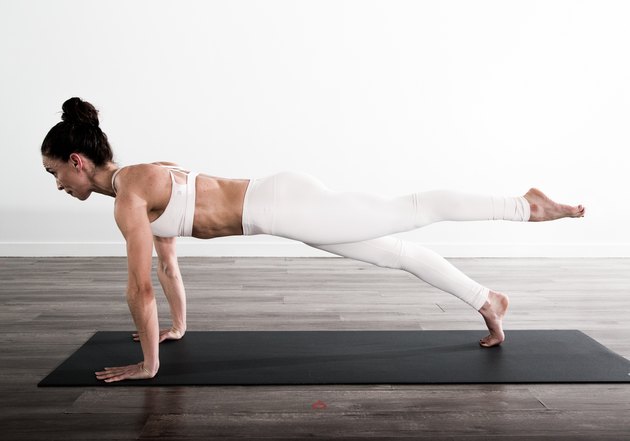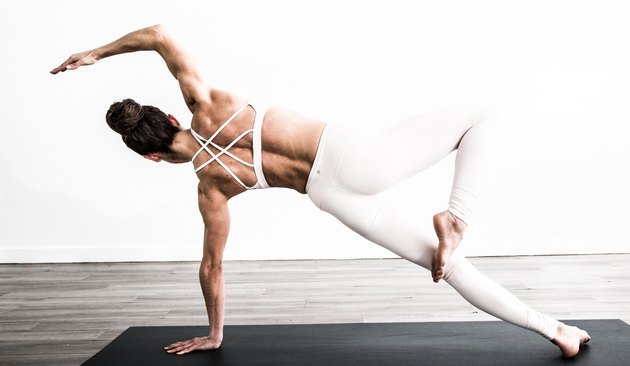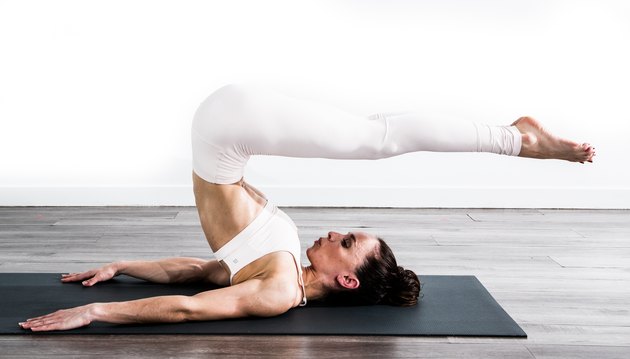Pilates is an intense workout — each exercise requires a total mind-body connection with specific instructions that should be executed correctly to make the routine most efficient. Since working with hundreds of Pilates clients, I've compiled a list of what to do and what not to do to limit distractions and improve your sessions!

Sponsored Links
DON'T: Say “Can’t”
Hearing someone say they can't do an exercise is like nails on a chalkboard in the Pilates studio. A great instructor builds programs or picks specific exercises based on a client's skill level and should never give a client an exercise that they physically aren't capable of. The goal is to challenge and progress a client in every session.
Pilates requires progress, not perfection, and being "good" at Pilates takes time and is so much more than nailing an exercise on the first attempt. An exercise may not be perfected on the first try, but that doesn't mean that you cannot do it. So give it a try, and if you're really having trouble, ask for a modification (though most instructors will have already suggested one).
DO: Focus on the Mind-Body Connection
Pilates requires an intense mind-body connection to execute each movement. Engaging the mind just as much as the physical body is important for best results from a Pilates regimen. Clients should visualize their muscles and bones working together at they physically engage to produce precise movements rather than relying on momentum, speeding through exercises or incorrect form.
Sponsored Links

DON'T: Expect Dramatic Weight-Loss
Pilates makes you strong not skinny. And instructors specialize in movement and flexibility, so your main focus during class shouldn't be losing weight. It can be one of your goals but not most important.
Pilates will shred your muscles, strengthen your core and build total-body strength, but Pilates cannot guarantee dramatic weight-loss — that comes from an overall lifestyle change, which Pilates will greatly enhance.
DO: Be Consistent!
Consistency is key. When you're first stating, set aside two hours each week that you can dedicate to your Pilates routine. The more you do Pilates, the more quickly your body will respond. Muscle memory sets in, and the body will develop a deeper connection to the exercise. Soon, you'll notice changes like engaging your core while performing daily tasks, significantly improved posture and a reduction in body aches and pains.

Sponsored Links
DON'T: Compare Yourself to Others
Every body is different. Pilates is a personal journey, so please don't be envious of the abilities of someone else in the room. Everyone who practices Pilates, even Pilates instructors, have days when it's difficult to do a certain exercise. Bodies change daily, so it's important to listen to yours and feel what's going on during each exercise.
DO: Engage Your Glutes
When practicing Pilates, one very important rule of thumb is always engage your glutes! Engaging your glutes — a.k.a. butt — helps to keep the pelvis in it's correct position during each exercise, which is crucial to proper form and helps maintain connection to the powerhouse muscles (inner thighs, rectus and transverse abdomen, internal/external obliques and hamstrings), which eliminates pressure on the lower back or spine. Anytime you feel an ab exercise in the lower back instead of your abdominals, try it again, but next time, squeeze your butt!
